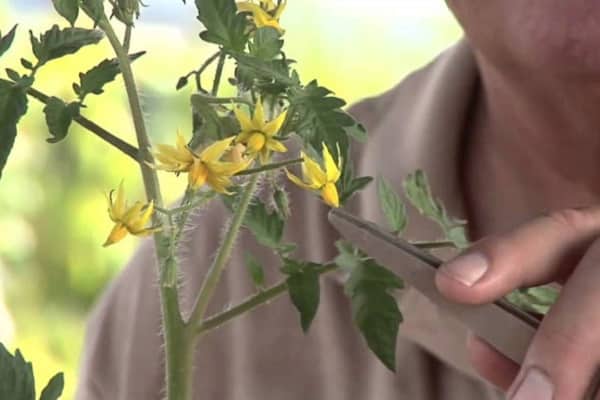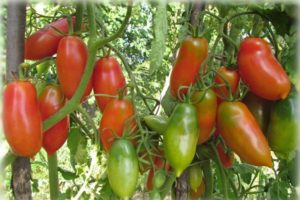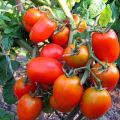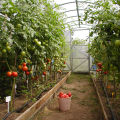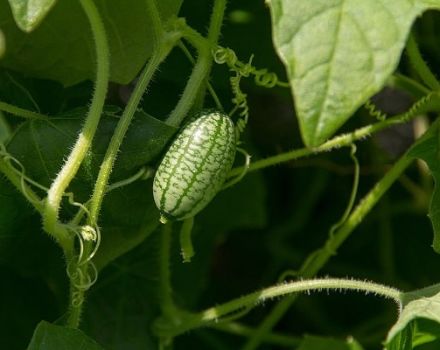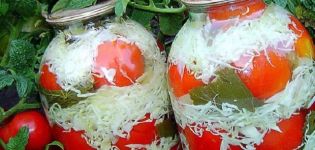The best varieties of self-pollinated tomato seeds for greenhouses and open field
Now producers offer very high-quality high-yielding tomato varieties that are self-pollinated. Self-pollinated varieties are those tomatoes that contain male and female stamens in their inflorescences. Thanks to this, you can grow them right at home, on the porch, on the balconies, and not just in the gardens. In addition, such tomatoes always give a bountiful harvest, have strong immunity and are not afraid of any weather conditions. It is necessary to learn how to select self-pollinated, high-yielding tomato seeds for the greenhouse, and how to make them produce a lot of fruit.
What to focus on when choosing seeds
Summer residents usually choose tomatoes according to some important criteria. They are different, each variety has its own taste, purpose and amount of harvest.
The basic requirements for seeds that experienced gardeners usually pay attention to:
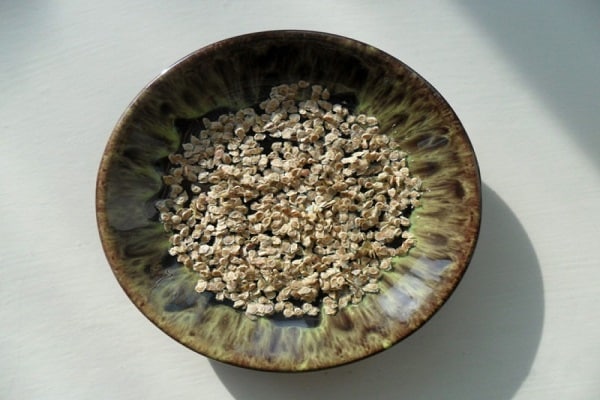
- Immunity, endurance in relation to various diseases of tomatoes.
- Bountiful harvest. Some varieties are not made for this.
- Why tomatoes are grown: they are used in salad form, for slicing, pickled or salted, for making healthy tomato juice.
- Taste: tomatoes are sour, sweet, sour-sweet, bitter.
- Good firm, reviews.

Tomatoes are also divided into varieties:
- Low or tall bushes;
- Large fruits, medium weight and small mini;
- For greenhouses or for open ground;
- Shrubs with limited growth point or not;
- Tomato or fruity taste;
- Colour. There are different colors and shades: red, green, yellow, even black;
- Early, middle or late.
If the summer resident doubts choosing self-pollinated varieties, then you can study a lot of useful information about them on the Internet. Since almost all of them have excellent resistance to diseases, they are not afraid of temperature fluctuations, frequent spontaneous changes in the weather, they bring an excellent harvest, and are pollinated naturally.
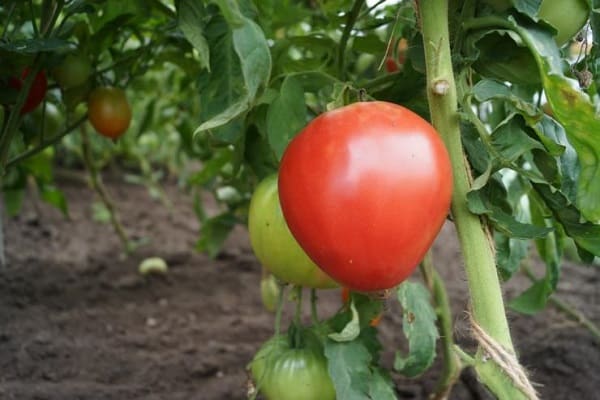
Early ripe tomatoes
Self-pollinated tomato seeds for greenhouses and open ground are divided into several groups. Among them are early and mid-season. Early varieties of tomatoes bear fruit already on the eightieth day after germination. You can try them already in the middle of summer. They are not large, round, regular, smooth.
Here are some examples.
Tomato Bear in the North. Fruits are sweet, their weight reaches 150 grams, red. Blush on the branches all together. They do not have time to get sick, as they ripen very early.
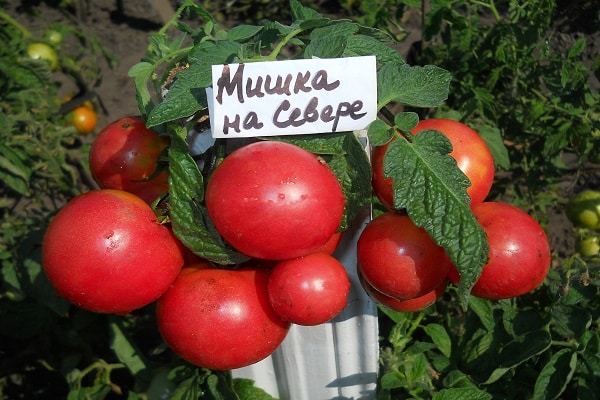
Amber tomato has a bright yellow color. Bushes are low. The fruits are used for fresh food or canned. Their taste is excellent.
The Joy of Leta variety is a bright red tomato with a rich taste and aroma. The bush is low, no more than 50 centimeters. The taste is sweet and sour. Purpose - fresh food or conservation. Ideal for sale, do not crack, give a high yield.
Tomato Snow Tale... Ripens three months after seed germination. Bushes are undersized. Tomatoes are even, smooth, round. Weight up to 100 grams, small. The bushes are covered with high yields. They have excellent immunity, they are not afraid of cold weather. Can be preserved whole, cut into salads, cooked pasta, sauces.
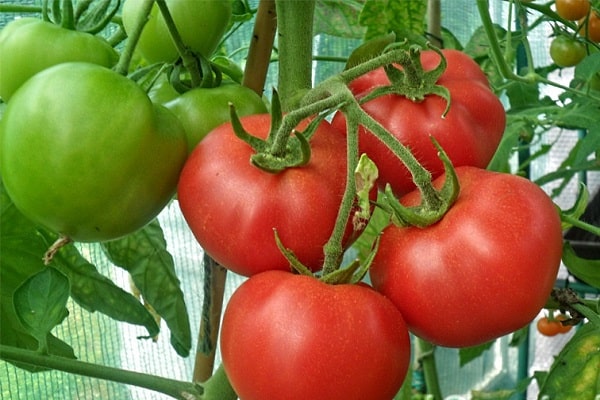
Mid-season tomatoes
Mid-season tomato varieties are those that ripen no earlier than three and a half months after pecking the seeds. Grown in open soil mature later than greenhouse ones.
Typhoon. It has a branched stem, dark green greenery, strong immunity. Fruits are small, up to 100 grams. Stored for a long time, they tolerate transportation well. Great for canning.
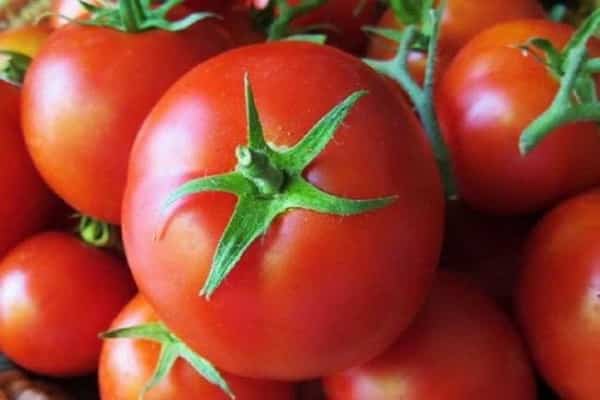
Dean's variety. Stunted, give abundant productivity. The fruits can weigh up to 170 grams. The color is yellow, the shape is round. The taste is sweet. Canning and making fresh salads.
Tomato Semko-Sinbad F1. Low shrubs with an erect stem. Ripe fruits are dark in color. The taste is rich tomato. Immunity to fungal diseases.
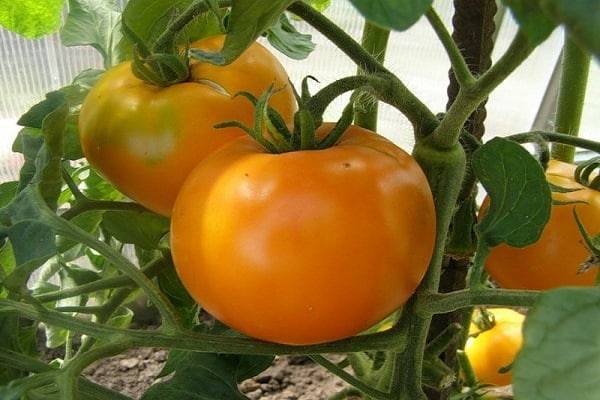
Buddy F1. Very high yield. Can be grown for sale, will not crack in transit. The fruits are round, slightly ribbed at the base. Red color. Weight up to 100 grams, not very large. The taste is sweet and sour. Bushes are low. Has a strong immunity, unpretentious care.
The Verlioka variety is also self-fertile. Can be grown outdoors. They can lie in the cellar for a long time, tomatoes are well transported. Bushes grow up to one and a half meters. Taste and productivity at a height.
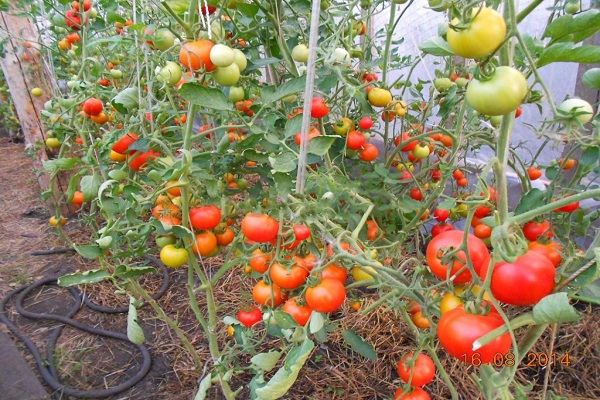
Ilyich is famous for its bright orange fruits. The bush is high, it must be tied up. One bush brings more than six kilograms of tomato. The fruits can weigh up to 170 grams. Can be salted and pickled. They are ill a little during the entire period of growth.
List of the best short and tall
Low growing tomatoes for greenhouses or for open ground with a self-pollination function, they are often bred directly on balconies, loggias, on the porch, in pots. Names of varieties: Lady, Mystery, Ballerina, Eleanor, Seagull, Asteroid. Fruits of medium size, varied shapes. Basically, everything is sweet and sour in taste, the yield is high.
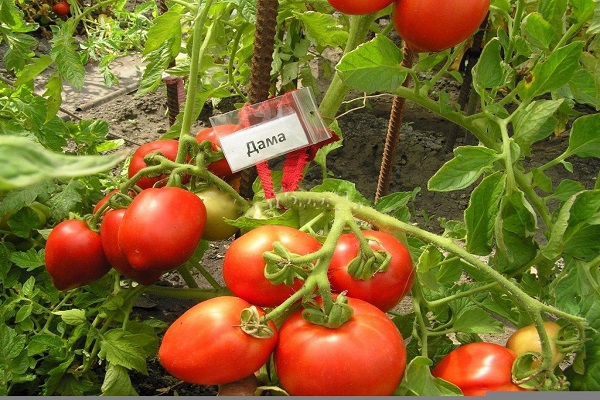
Tomato varieties for greenhouses or open spaces, in which the bushes are quite tall - this is the Scarlet Mustang, tomato Intuition, Mushroom basket, Midas, Da Barao, Honey Savior, Donna Rosa, Pink Tsar and others. The fruits are mostly large, ripen almost to the very frost, have excellent immunity. Each of the listed tomatoes is self-pollinating, which is beneficial for improving the quality of the crop.

Large and small fruits
Self-pollinated tomatoes, which are grown for outdoor use or for greenhouses, vary in size. It all depends on the tastes of summer residents.
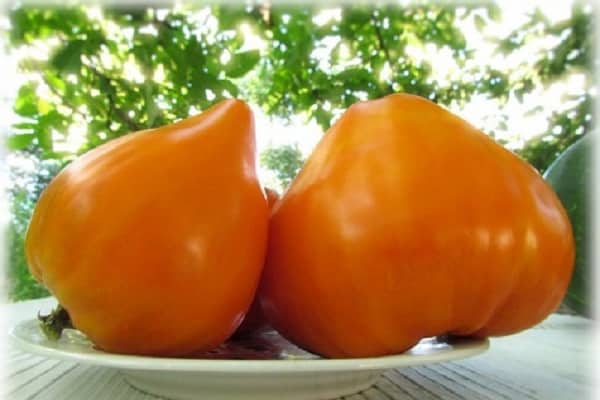
Large varieties have a sweet taste, weight up to 500 grams, tall bushes. They are meaty and juicy. They are grown mainly for fresh food. This is the Cap of Monomakh, Chernomor, tomato gardener's dream, variety Cardinal, Queen of the market and others.
Small varieties are ideal for salting, have thick skin, sweet, rich taste. Their weight is from 20 to 100 grams. These are Aladdin's Lamp, Sugar Plum, Cherry, Truffle, Italy, Honey Drop, Slivovka, Picket and others.
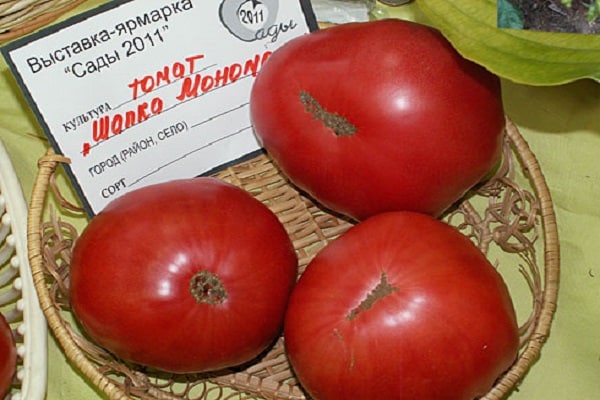
Caring for tomatoes that pollinate themselves
Self-pollinating tomatoes created for open ground or greenhouses need standard care. It differs little from caring for ordinary tomatoes.
- Provide constant high-quality watering with warm water.
- Ventilate in greenhouses to regulate humidity levels.
- Remove weeds, loosen the ground, mulch.
- Fertilizing according to the schedule.
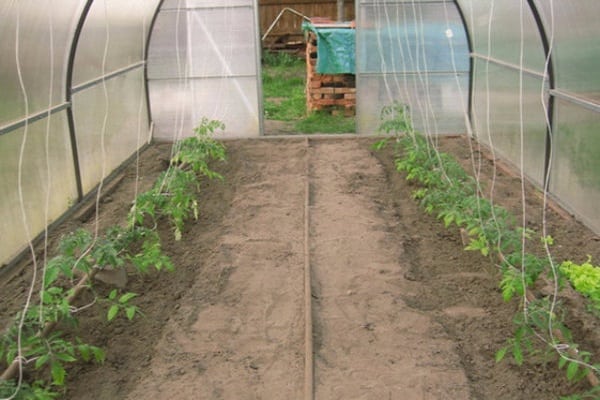
If self-pollination is weak, then you can artificially help tomatoes. You can use a brush to gently transfer the pollen yourself onto the flower pistil. Or blow with a fan, shake the branches well. Attract butterflies, bees, wasps to the garden. They are valuable helpers.
There are quite a few varieties of tomatoes with natural self-pollination. Each summer resident among this variety will be able to choose something for himself in accordance with the possibilities, conditions and needs. Have a good harvest!
